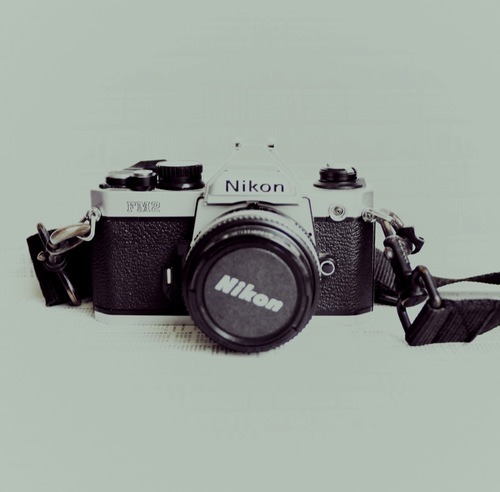How to Choose a 35mm Film Camera (for beginners)

You may be saying to yourself, “Why on earth would I buy a film camera now?” While we may be in the heart of the digital age, there are actually many reasons to shoot film - far beyond the nostalgic appeal and low-fi effects. For a solid list, check out 11 Reasons to Shoot Film. For the purpose of this post, the most appealing aspect of shooting film is that you can purchase incredible high-quality, professional-level cameras at insanely low (and sometimes depressing) prices.
If you’re a newbie to the film world, trying to distinguish between a Nikon FM, Canon AE-1 or Pentax K1000 may seem scary, but in reality they all use the same basic functions. So, without further ado, here are 4 basic things to look for when choosing your very first 35mm film camera:
1. Make sure the camera has a fully manual function.
If you have decided to learn film photography, you might as well really go all the way and learn to shoot fully manual for total control. Shooting fully manual means that no automatic settings are used, and you will need to correctly balance your shutter speed, aperture, and ISO to achieve a proper exposure. If you need help in that area, have a look at Exposure 101 in my Beginner’s Guide to Film Photography. Some cameras will have an “M” on the dial to use the manual function, other cameras may feature an “A” for automatic and then display shutter speeds. Most cameras manufactured before the 1980’s are manual and have few (if any) automatic settings.
I cannot stress the importance of shooting fully manual, even when it comes to digital photography. Learning this process will fine tune your photography skills all around and you will probably notice an improvement in your digital photos as well. After years and years of light metering and Sunny 16-ing, I’ve gotten to a point where I can look at a situation and guestimate the correct exposure pretty accurately. No joke, someone just tested me on an airplane and I gave the exact exposure as his light meter. Acquiring this type of skill is an incredible advantage when shooting in “real world conditions” and the easiest way to do it is to force yourself to shoot manual.
2. Choose a common model which will be easy to repair .
When investing in your first 35mm film camera, try to choose a relatively common make and model that should be easy to maintain and repair. As much as obscure cameras are beautiful pieces sought after by collectors, the upkeep and repair can get quite pricey as most will require a specialist if they break. The following brands are guaranteed safe bets:
- Nikon
- Canon
- Pentax
- Olympus
- Minolta
- Vivitar
- Leica (rangefinder)
These large, well-known brands produced many models and can be found (and repaired) all over the world. It is also easier to find an instruction manual for more common camera models. Choosing a common camera model also makes it easier to find extra lenses and accessories such as motorized bottoms (imperative for those who shoot fast.)
3. Opt for a built-in light meter.
Learning correct exposure will be difficult at first when learning to shoot film, and you will not have that handy digital display screen to check your work. Opting for a camera with a built in light meter will save you a lot of money on wasted film as well as facilitate the process of learning exposure. Most film cameras manufactured after the 1950’s come with some form of light meter, but it is best to avoid cameras with Selenium light meters when starting out. Selenium light meters are small strips that look similar to a blank solar calculator screen running across the top of the camera, or around the exterior of the lens. Once the selenium light meter dies, it is difficult and expensive to have replaced. Choose a camera which has a battery operated light meter so that when it dies you can easily replace the battery.
4. Look for models that use a “standard” 35mm system.
This tip relates to the “choosing a common model” tip, but even big brands have manufactured camera anomalies. Occasionally, but not often, cameras were made that differed quite noticeably from the average 35mm camera - for example requiring the photographer to stop down the aperture before being able to set the shutter speed. Another example - my Fed 5 requires cocking the shutter before changing the shutter speed. These types of cameras were not very successful due to their complicated usage, but collectors snap them up so you may stumble upon one unknowingly. A quick internet search will tell you if the camera you are interested in has any strange instructions or complicated features.
*If you’re not purchasing from a store or authorized dealer, be sure to review this list of things to check when purchasing a vintage camera.
No comments:
Post a Comment
Note: Only a member of this blog may post a comment.